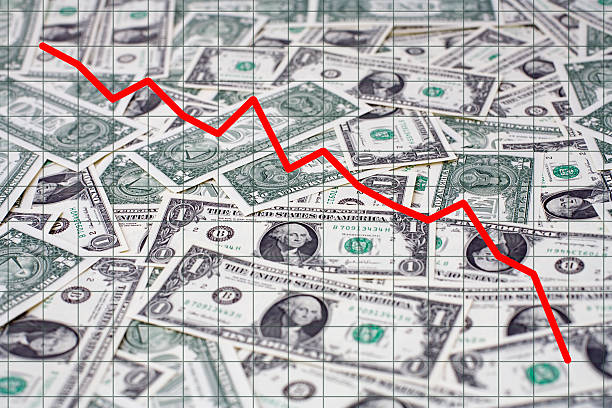Introduction to the Current State of the U.S. Dollar
The U.S. dollar, once a pillar of strength in the global economy, is facing turbulent times. Recent market uncertainty has left investors and consumers alike on edge as they navigate an unpredictable financial landscape. With every tick of the forex market, concerns about inflation, interest rates, and geopolitical tensions continue to shape perceptions about the dollar’s future.
As we delve into the factors behind this sharp decline in value, it becomes clear that understanding these dynamics is crucial for anyone looking to safeguard their finances amid growing economic concerns. Whether you’re a seasoned investor or just trying to make sense of your budget at home, knowing how these shifts impact our everyday lives can empower us all during such unpredictability. Let’s explore what’s really happening with the dollar and how it affects both local markets and international trade around the globe.
Factors Contributing to the Dollar’s Weakening
Several factors are at play in the dollar’s recent decline. Economic indicators point to slowing growth, raising alarms for investors. Inflation remains stubbornly high, eroding purchasing power and consumer confidence.
Interest rates also weigh heavily on currency strength. As central banks around the globe adjust their monetary policies, the U.S. Federal Reserve faces pressure to maintain a competitive edge. Any signal of rate cuts can send the dollar tumbling.
Geopolitical tensions add another layer of complexity. Ongoing conflicts and trade disputes create waves of uncertainty in global markets, leading to fluctuating demand for safe-haven currencies like the dollar.
Changes in foreign investment flows impact market dynamics significantly. If capital shifts toward emerging markets or other economies gain traction, it could further diminish support for the dollar amid growing economic concerns.
Impact on Global Markets and Trade
The weakeningS. dollar has immediate repercussions for global markets and trade dynamics. As the dollar loses value, imports become more expensive for American consumers and businesses. This can lead to a decline in purchasing power, making foreign goods less accessible.
Conversely, countries exporting to the U.S. may benefit from increased demand for their products as their currencies gain strength against the dollar. This shift can stimulate growth in emerging markets while challenging established economies reliant on exports.
Moreover, currency fluctuations create volatility in forex news cycles. Traders are keenly observing these developments as they navigate uncertain waters. Companies engaged in international trade must adapt quickly to changing exchange rates or risk losing competitiveness.
In essence, market uncertainty stemming from a weaker dollar ripples through various sectors globally and influences investment strategies across borders.
Potential Effects on U.S. Economy and Consumers
A weakening U.S. dollar can have varied effects on the economy and consumers alike. For starters, imported goods become more expensive. This shift may lead to higher prices at grocery stores and retail outlets.
Consumers might feel the pinch as everyday essentials cost more. Items like electronics, clothing, and food could see price hikes due to increased import costs.
On a broader scale, businesses that rely on imports may struggle with profit margins. This situation can trigger layoffs or reduced hours for employees as companies attempt to manage expenses.
However, there’s also a silver lining for U.S. exporters. A weaker dollar makes American products cheaper abroad, potentially boosting sales overseas.
This dynamic creates tension within various sectors of the economy while affecting consumer purchasing power in unpredictable ways. The overall landscape remains fragile amidst ongoing global market uncertainty.
Strategies for Managing Finances During a Weak Dollar
When the dollar weakens, it’s essential to reassess your financial strategies. Start by reviewing your investments. Consider diversifying into assets that typically perform well in a declining dollar environment, such as commodities and real estate.
Next, focus on budgeting. Tighten up unnecessary expenses. This is a good time to prioritize essentials over luxuries.
If you’re planning international travel or purchases, consider timing carefully. Exchange rates fluctuate daily; waiting for a favorable rate can save significant money.
Many consumers may also benefit from looking at foreign currency accounts or investing in international stocks. These options can hedge against domestic market uncertainty.
Keep an eye on inflation trends linked to a weaker dollar. Adjusting savings plans accordingly might help maintain purchasing power during turbulent economic times.
The Role of Government Policies in Stabilizing the Dollar
Government policies play a crucial role in stabilizing the U.S. dollar during periods of market uncertainty. When economic indicators signal trouble, swift action can help restore confidence.
Monetary policy adjustments by the Federal Reserve are often the first line of defense. Lowering interest rates can stimulate borrowing and spending, but it may also weaken the dollar further if not managed carefully.
Fiscal policies, including government spending and taxation decisions, can influence overall economic health. Investments in infrastructure or technology can boost productivity and drive growth, which supports a stronger dollar.
Additionally, regulatory measures to enhance financial transparency contribute to stability. Investors need assurance that their assets are protected against sudden fluctuations in currency value.
International cooperation on trade agreements helps create a more favorable environment for the dollar globally. Balancing these elements is key to maintaining its strength amid ongoing global challenges.
Is This Trend Sustainable?
As we navigate the complexities of the global economy, many are left wondering whether the current trend of a weakening U.S. dollar is temporary or indicative of deeper issues. Economic indicators suggest that market uncertainty will continue to play a significant role in shaping currency values.
Experts point to several factors influencing this situation. Inflation rates, shifting interest rates, and geopolitical tensions all contribute to ongoing fluctuations in forex news and investor sentiment. If these pressures persist, they could lead to further declines in dollar strength.
Moreover, as other economies recover or adapt more quickly from recent challenges, their currencies might gain an edge over the dollar. This shift can create ripple effects across international trade routes and investment strategies.
For consumers and businesses alike, understanding how these dynamics impact financial planning becomes increasingly important. Strategies for managing finances during such uncertain times may include diversifying investments or considering foreign exchange opportunities.
The government’s response will also be crucial in stabilizing the dollar’s value moving forward. By implementing sound economic policies, there’s potential for recovery even amidst growing concerns regarding inflation and international relations.
While some analysts remain optimistic about potential rebounds fueled by strong fundamentals in certain sectors of the economy, others caution that without decisive action on various fronts—both domestically and globally—the trend we’ve observed may very well continue into 2024 and beyond. The landscape remains volatile; staying informed will be key for anyone looking to navigate these turbulent waters effectively.




